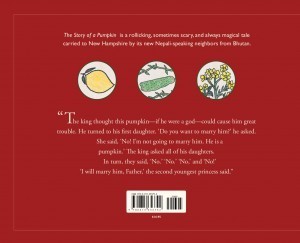Terry Farish's Blog, page 29
June 15, 2012
The Story of a Pumpkin, a tale from Bhutan
 The Story of a Pumpkin, a folktale in Nepali and English, has just been published by the New Hampshire Humanities Council. The photo is from our Folktale Festival celebrating the tale told by Hari Tiwari who now lives in Laconia, NH. This book is the fruit of the work of many: new
The Story of a Pumpkin, a folktale in Nepali and English, has just been published by the New Hampshire Humanities Council. The photo is from our Folktale Festival celebrating the tale told by Hari Tiwari who now lives in Laconia, NH. This book is the fruit of the work of many: new 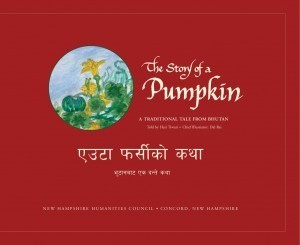 neighbors from Bhutan, folklorist Jo Radner, artist Susan Gaylord, and me, in my job as literacy director at the NH Humanities Council. The story was told to us by Hari Tiwari whose father told her the tale when she was a small girl in Bhutan. You can read about the steps we took, from collecting folktales in ESOL classes to proofreading in Nepali and English. The book is distributed by the University Press of New England. Soon we will have a teacher’s guide.
neighbors from Bhutan, folklorist Jo Radner, artist Susan Gaylord, and me, in my job as literacy director at the NH Humanities Council. The story was told to us by Hari Tiwari whose father told her the tale when she was a small girl in Bhutan. You can read about the steps we took, from collecting folktales in ESOL classes to proofreading in Nepali and English. The book is distributed by the University Press of New England. Soon we will have a teacher’s guide.
The Story of a Pumpkin, a tale in Nepali from Bhutan
The Story of a Pumpkin, a folktale in Nepali and English, has just gone to press. This book is the fruit of the work of many: new  neighbors from Bhutan, folklorist Jo Radner, artist Susan Gaylord, and me, in my job as literacy director at the NH Humanities Council. You can read about the steps we took, from collecting folktales in ESOL classes to proofreading in Nepali! Maybe you speak Nepali. Maybe you have Nepali speaking students at your school. Maybe you have traveled to Nepal. Maybe you’d like to create a bilingual book based on an oral tale. We have a book for you! The book will be available by the end of the summer. And soon we’ll have a teacher’s guide. Haven’t got there yet. But we can’t wait to show you this story, told to us by HariTiwari whose father told her the tale when she was a small girl in Bhutan.
neighbors from Bhutan, folklorist Jo Radner, artist Susan Gaylord, and me, in my job as literacy director at the NH Humanities Council. You can read about the steps we took, from collecting folktales in ESOL classes to proofreading in Nepali! Maybe you speak Nepali. Maybe you have Nepali speaking students at your school. Maybe you have traveled to Nepal. Maybe you’d like to create a bilingual book based on an oral tale. We have a book for you! The book will be available by the end of the summer. And soon we’ll have a teacher’s guide. Haven’t got there yet. But we can’t wait to show you this story, told to us by HariTiwari whose father told her the tale when she was a small girl in Bhutan.
May 20, 2012
The Good Braider Blog for the backstory
 I added a page Researching South Sudan to my Good Braider blog. This is the page to go to if you’d like to look more deeply into the causes and analysis of war in Sudan. One site you’ll find is Gurtong, a Peace and Media Project offering cultural background on the people of Sudan. Also on the blog you’ll find a video on African braids and stories of high school students who painted their interpretations of Sudan.
I added a page Researching South Sudan to my Good Braider blog. This is the page to go to if you’d like to look more deeply into the causes and analysis of war in Sudan. One site you’ll find is Gurtong, a Peace and Media Project offering cultural background on the people of Sudan. Also on the blog you’ll find a video on African braids and stories of high school students who painted their interpretations of Sudan.
The Good Braider Blog
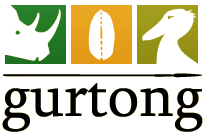 I added a page Researching South Sudan to my Good Braider blog. This is the page to go to if you’d like to look more deeply into the causes and analysis of war in Sudan. One site you’ll find is Gurtong, a Peace and Media Project offering cultural background on the people of Sudan. Also on the blog you’ll find a video on African braids and stories of high school students who painted their interpretations of Sudan.
I added a page Researching South Sudan to my Good Braider blog. This is the page to go to if you’d like to look more deeply into the causes and analysis of war in Sudan. One site you’ll find is Gurtong, a Peace and Media Project offering cultural background on the people of Sudan. Also on the blog you’ll find a video on African braids and stories of high school students who painted their interpretations of Sudan.
May 3, 2012
Praise for The Good Braider
One of my hopes is that THE GOOD BRAIDER could reach some people who didn’t know much about South Sudan even if they have  classmates and neighbors from the country. I’m glad to hear some of these critical responses from International Reading Association and newspaper reviewers.
classmates and neighbors from the country. I’m glad to hear some of these critical responses from International Reading Association and newspaper reviewers.
I like this one by a New Hampshire writer, Jennifer Graham, who knows about South Sudan and Manchester, NH, a city where many Sudanese people have made their home.
“If you want to know how [people from Sudan] got here, read the news accounts. If you want to know how it feels to move from a violent, war-torn country to a community that fights over where to put a Walmart, then read The Good Braider. Terry Farish’s new novel, composed in daring and lyrical free verse, opens a window into the life of one Sudanese schoolgirl, and in the shadows of her fictionalized life, reveals the true and real horrors that the Sudanese people endured.” Hippo, The New Hampshire Weekly May 17, 2012 p. 59-60
The Good Braider…”has the potential for creating empathy in the hearts of students who cannot begin to comprehend some of the reasons their classmates may have left their home countries. This book can be an important vehicle in building cultural awareness and sensitivity. I have nominated it as a YALSA 2012 Best Fiction book.” - ENGAGE / International Reading Association
“This is a story of courage – not just Viola’s, but of all immigrants.Without her [Farish's] advocacy, would these characters have a voice? Maybe. But with her they have a very certain voice, and the larger community needs these stories.” -Finding Wonderland
“Her characters are real people and their story is quite affecting. In the same way that Keji artistically weaves the braids, Farish weaves the words.” Edi Campbell Crazy Quilt Edi
April 27, 2012
International Reading Association Conference – April 30, 2012
Anne Sibley O’Brien’s book about a family from Cambodia was just published by Charlesbridge. Annie, Kirsten Cappy, and I are presenting a symposium at the International Reading Association Conference in April. Our topic – New Neighbors: Using Children’s and YA Books as a Bridge Between Cultures. I have spent hours journeying through Annie’s blog: Coloring Between the Lines: Reflections on Race, Culture, and Children’s Books. Chicago, here we come!
Update!! Here’s a link to a story about our presentation in Chicago and the back story to I’m Your Neighbor. And here’s a link to the I’m Your Neighbor blog.
April 20, 2012
A Letter from Portland, Maine
By Terry Farish
…A restaurant in Portland links African refugees with their past and Maine with its future.
The Federal Reserve Bank of Boston Regional Review Vol. 13 2003
A Letter from Portland
“Yes, food is so important.” Florence Olebe begins many ideas with a low, melodious “yes.” Her soft-spoken refrain offers the invitation, “come with me, I will bring you into my culture,” a responsibility she feels to the natives in Portland, Maine where she runs the Ezo African Restaurant.
March 30, 2012
The Good Braider
“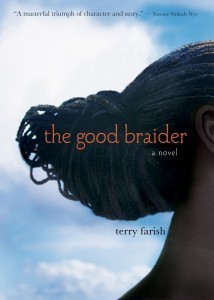 The Good Braider is a masterful triumph of character and story. Terry Farish’s Viola – strong, frank, tenderly wistful, and brave – is so expressive and endearing, that you will never encounter a refugee from anywhere without remembering Viola and her family. This is a novel of deep understanding and unforgettable empathy.” – Naomi Shihab Nye
The Good Braider is a masterful triumph of character and story. Terry Farish’s Viola – strong, frank, tenderly wistful, and brave – is so expressive and endearing, that you will never encounter a refugee from anywhere without remembering Viola and her family. This is a novel of deep understanding and unforgettable empathy.” – Naomi Shihab Nye
At The Good Braider blog, read about: a high school project inspired by a young man from Darfur, a memoir by a Sudanese college student, Terry’s journey to write The Good Braider.
Here’s the Good Braider Brochure _Indiv_Pages
Excerpt from the verse “Girl from Juba” -
Women come to our courtyard for my mother’s braids.
When I was young my little fingers
rode on her long narrow ones.
Her fingers danced over my cousin’s hair like feathers,
shaping twists and lines with a single tiny bead
slipped on the end.
I learned to braid by feel more than sight.
My mother calls me by two names, Viola, for Jesus,
and Keji, for firstborn girl.
“All men in Sudan will want to marry you” she used to say.
“You are a girl from Juba.”
March 28, 2012
The Cat Who Liked Potato Soup
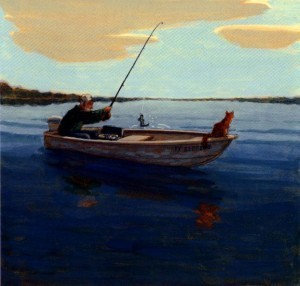
The Cat Who Liked Potato Soup, illus. by Barry Root
“Picture book artists tend to get most of the glory in the picture-book partnership, but a truly fine picture-book text is a thing of beauty in its own right, achieving things that pictures can’t (even as the art achieves things that the text can’t) rather than functioning merely as punctuation or captioning. Though it’s a demanding format, with its need for compactness and for partnership, there are those that excel at it: Margaret Wise Brown, Arthur Yorinks, Jacqueline Briggs Martin, to name a few. Now Terry Farish demonstrates herself an exciting new talent in the genre with this casually told yet tender tale about the prickly friendship between an old man and his cat’.
There are plenty of youngsters who will be drawn to the notion of living with just a beloved pet for company. There are also likely quite a few kids in similar human relationships, where they’re grumped at by somebody undemonstrative who’s genuinely fond of them nonetheless, and this story may help explain that cranky commentary can hide unspoken affection. Even kids who don’t fall into those categories will appreciate the rhythmic storytelling, the lively individuality, and the irascible yet endearing relationship between these memorable characters.”
Bulletin for the Center of Children’s Books Blue Ribbon Winner
Be a Dad. Be There
By Terry Farish
“Like I want to rush my sentence. I feel like I’m missing out with my baby. But it seems like six months has gone so fast for her. You want to take in every last breath you can take, and make them last.”
Inmates connect with their kids reading poetry and Jane Yolen’s Owl Moon.
On a wall at the Concord State Prison Family Connections Center is a poster with the message, “Be a dad. Be there.” Around the table eight inmates join Connections facilitator Sara Backer. To be at this table the men have met certain requirements. They are all dads, including step-dads. They have attended communication classes and weekly parenting education classes to earn the privilege of attending the New Hampshire Humanities Council discussion. These men are among the growing number of incarcerated parents in the U.S. The Pew Center on the States reports findings of a national study that 2.7 million children (1 in 28) have parents who are incarcerated, up from 1 in 125 twenty-five years ago.
“I continue to parent the best way I can,” Kevin, one participant, says.
Marquis, a tall, articulate man, said when he was two, his father was murdered. He was determined to be there for his own child, even from prison.
Chad, who is reflective and the spokesman others sometimes turn to, says, “We are all dads who want to be better dads to our children.”
Mary Kelley, program coordinator for the NH Department of Corrections Family Connections Center says they offer many programs to help inmates learn parenting skills and maintain their role as parents. The FCC brings Connections book discussions, featuring children’s books and poetry, as a further opportunity to build these ties. Word spread from Concord to Berlin that men valued the Connections reading club as a way to continue their learning and connect with their kids. Concord, Berlin, and Goffstown have all hosted the reading program.
Three of the men have met Sara in a previous series and understand what they are going to do. The rest are there on faith.
Sara passes out the first book, a picture book, Owl Moon by Jane Yolen. John Schoenherr’s illustration’s capture a deep New England wood in moonlight and shadow. Sara reads the first page. Everyone at the table reads a page. They read about a stark winter night when a child and father go owling.
Marquis reads,
If you go owling
You have to be quiet
And make your own heat.
Chad wishes he got a page without the owl call, but he reads,
Pa almost smiled. Then he called back:
“Whoo-whoo-who-who-who-whooooooooo,”
just as if he
and the owl
were talking about supper
or about the woods
or the moon
or the cold.
Sara asks what their kids would say about the story. They said their kids would like it because of the owl’s howl. “You can’t skip the whooooo with a kid,” they agree.
“My nine-year old,” said Kevin whose hair is coming on white, “he’d like the dark woods, a son and dad alone walking, something he hasn’t seen in a long time.”
Each man makes the unnamed and bundled child in the book the gender of his own child. “It’s a poetic moment,” Chad says, “A child and father in a great landscape.”
Jonathan says, “I couldn’t even imagine the things my daughter and I are going to do. We might just look at squirrel footprints in the snow.” Jonathan is twenty-three. His daughter, Leila, is six months old.
Michael and his son already know this book. He says, “When I get out, my son wants to go owling.” He laughs. “We don’t have any owls where we live, but we can go look.”
The theme of the series of discussions is “How to See,” a name taken from Philip Booth’s poem, “How to See Deer,” with the lines “in deep relief/ things even out. Be/ careless of nothing. See/ what you see.” In a previous discussion, men had spent an hour on that poem and adjusted to seeing it from each of their different perspectives. They’ve become skilled in listening and curious to hear conflicting interpretations that have their own sense.
In this series Sara continues the exploration of ways of seeing a poem – and one’s life – this time beginning with a picture book and visual discoveries in Schoenherr’s illustrations beside Yolen’s narrative poem.
They talk about why their kids might see some details that older, more experienced eyes might not see. “Maybe if it’s not new, we learn not to pay attention,” Sara says and suggests this is the way to read poetry, with eyes open to new ways of seeing.
They read a prose poem in Garrison Keillor’s anthology, Good Poems, called “The Life of a Day” by Tom Hennen. This is the line that seems to sit in the middle of the table, the arresting line:
“For some reason we like to see days pass, even though most of us claim
we don’t want to reach our last one for a long time.”
Jonathan says, “Like I want to rush my sentence. I feel like I’m missing out with my baby. But it seems like six months has gone so fast for her. You want to take in every last breath you can take, and make them last.”
The time is moving quickly. The men are aware of the clock beside the poster and when they’ll have to move on from this table.
But for now, Sara offers a final poem. It’s Ray Carver’s “At Least.” Carver lists many things that he wants. He ends in this way, “I want to get up early one more morning, at least./ And go to my place with some coffee and wait./ Just wait, to see what’s going to happen.”
She invites the men to write a poem using “At Least” as a model, “as if you have your hand on Ray’s hand” and you can follow that form.
Their poems are about their kids. Kevin also writes, “I want to walk down a road. I don’t mind getting lost.”
A reporter is here and the men go around and tell him their name, offence, and sentence in the same open way they talked about the owl. Sara gives homework for the next session. Read the next book, Woodsong. Gary Paulsen. “And bring your poetry book. You never know when you’re going to need a poem.”
Reprinted from the Newsletter of the New Hampshire Humanities Council, December 2010.

